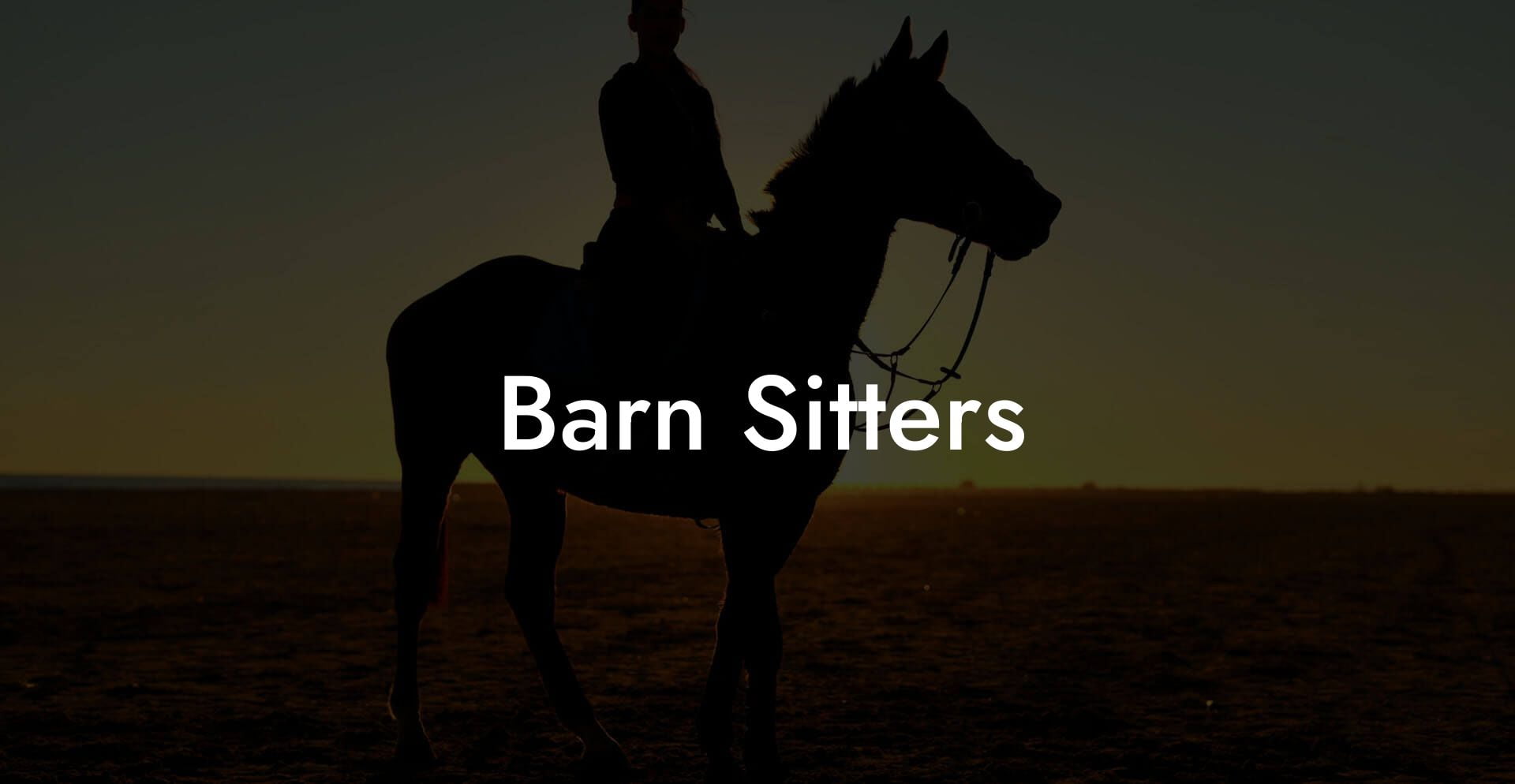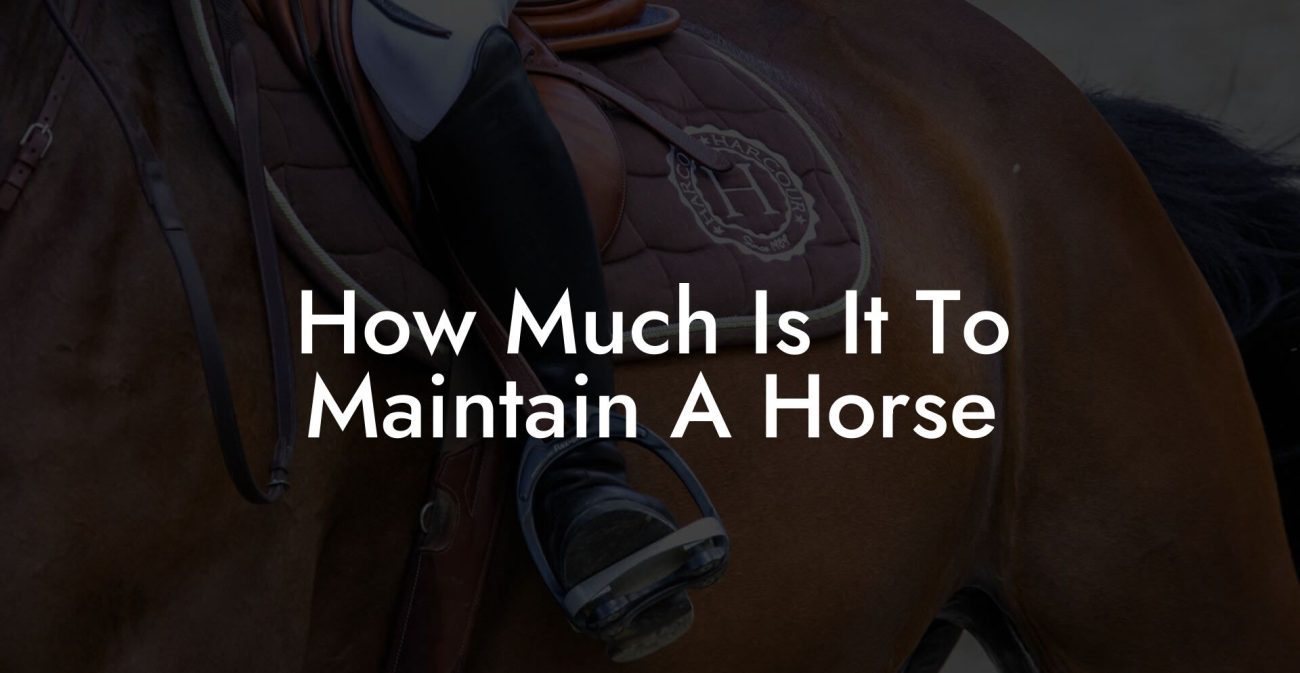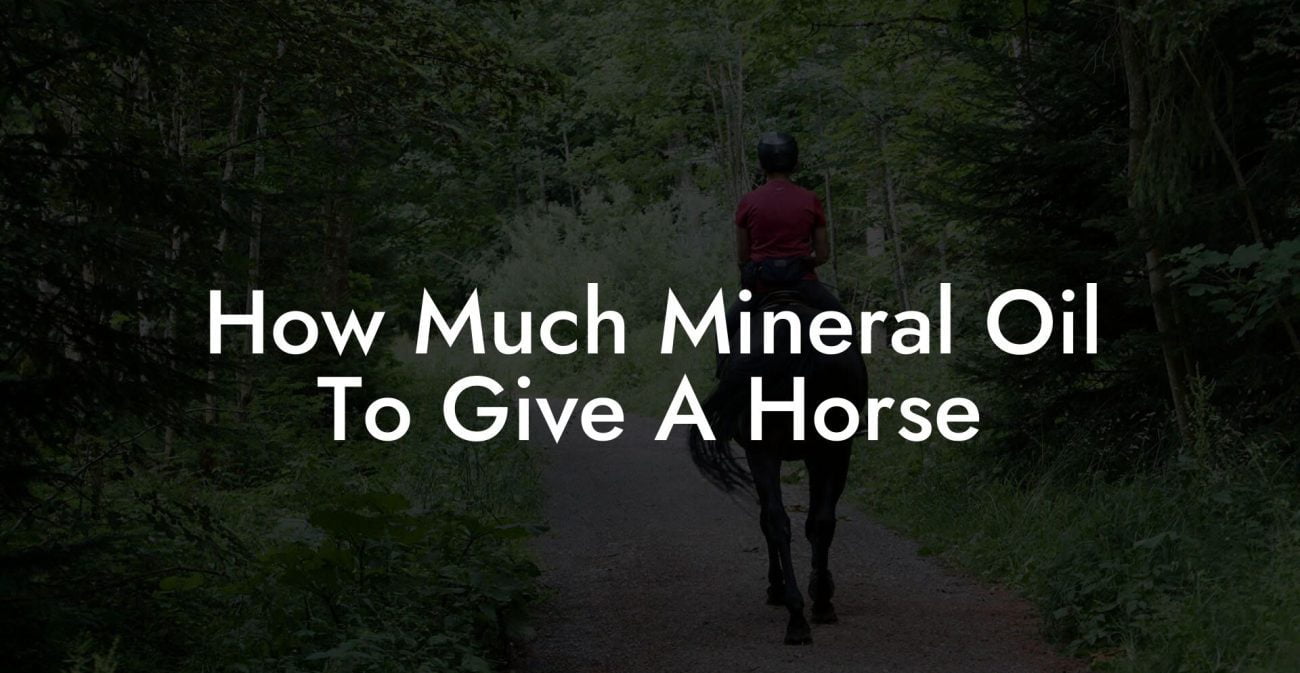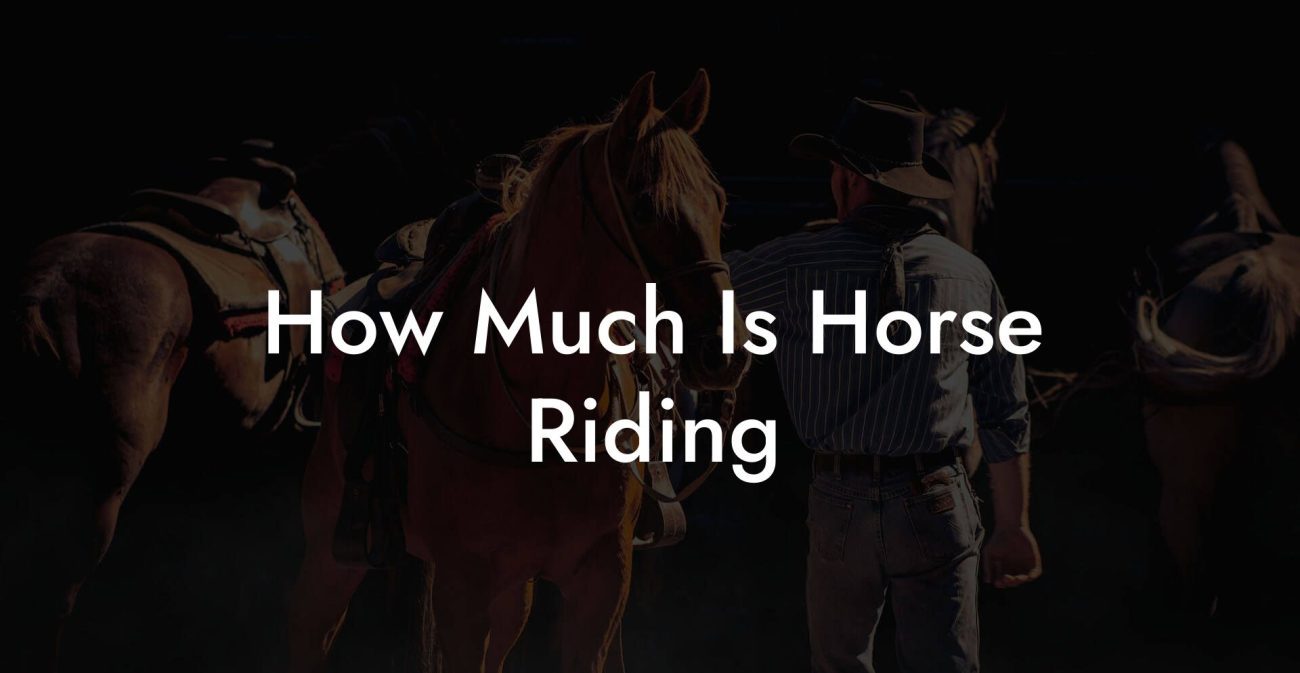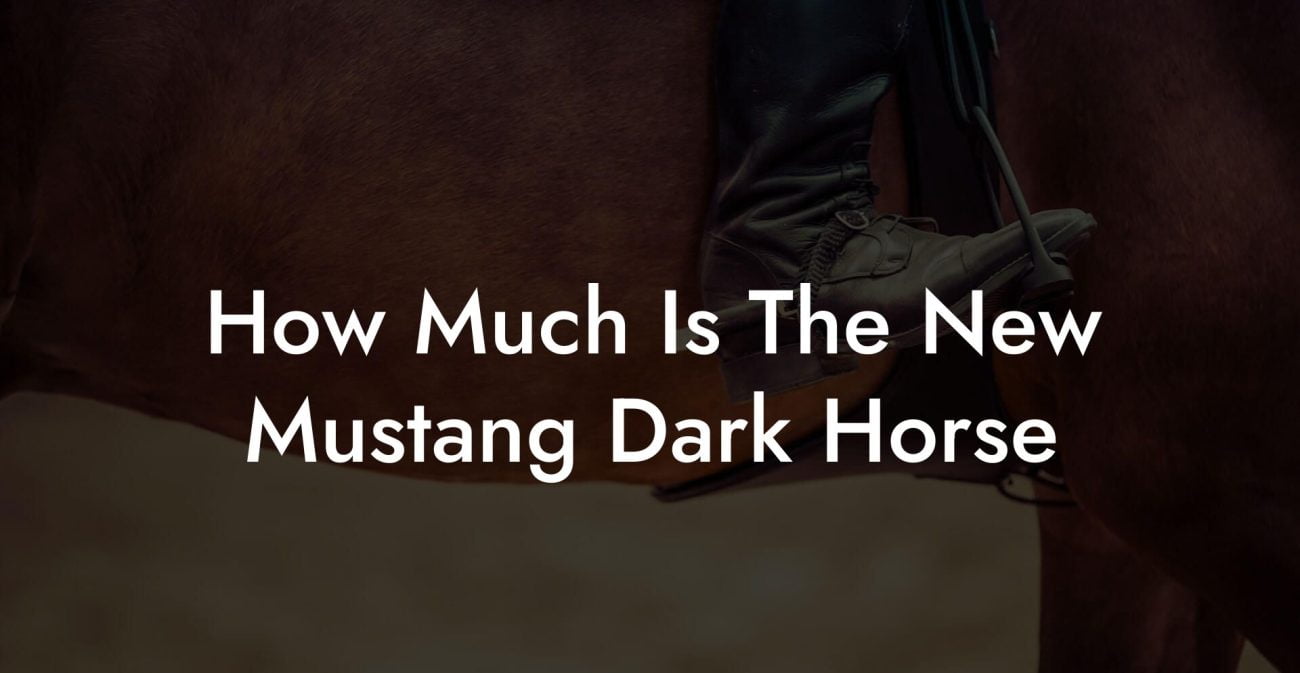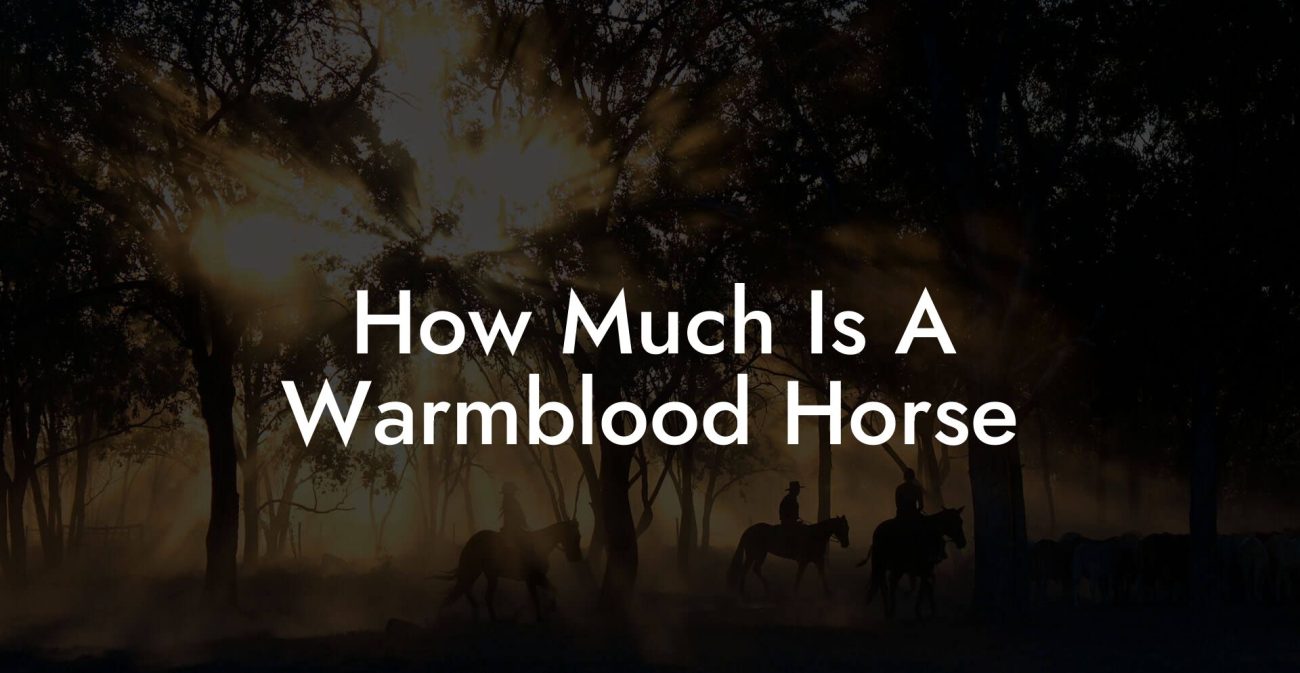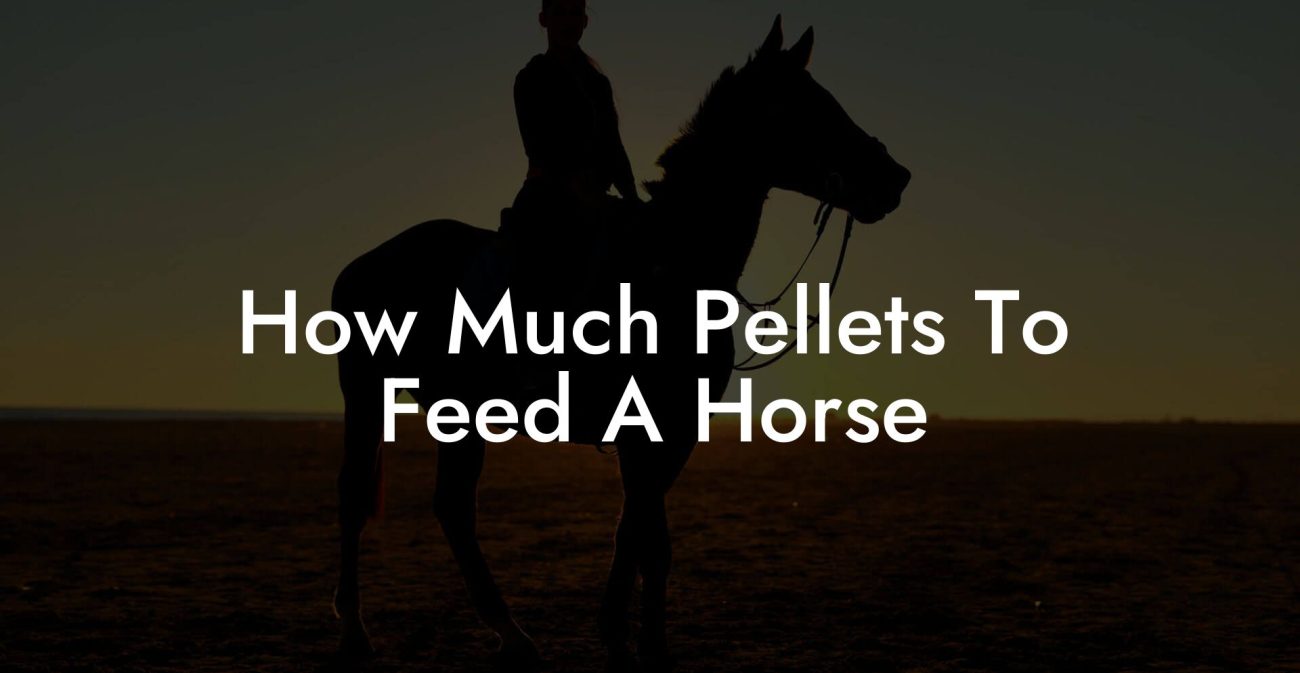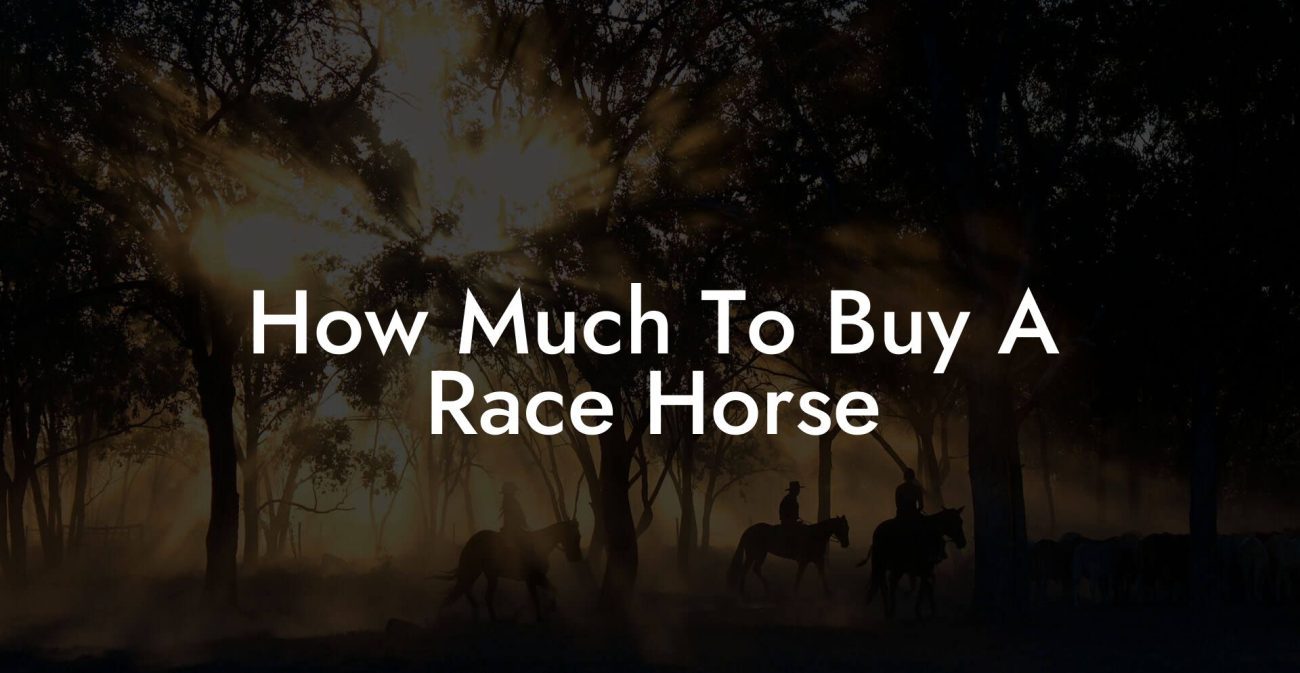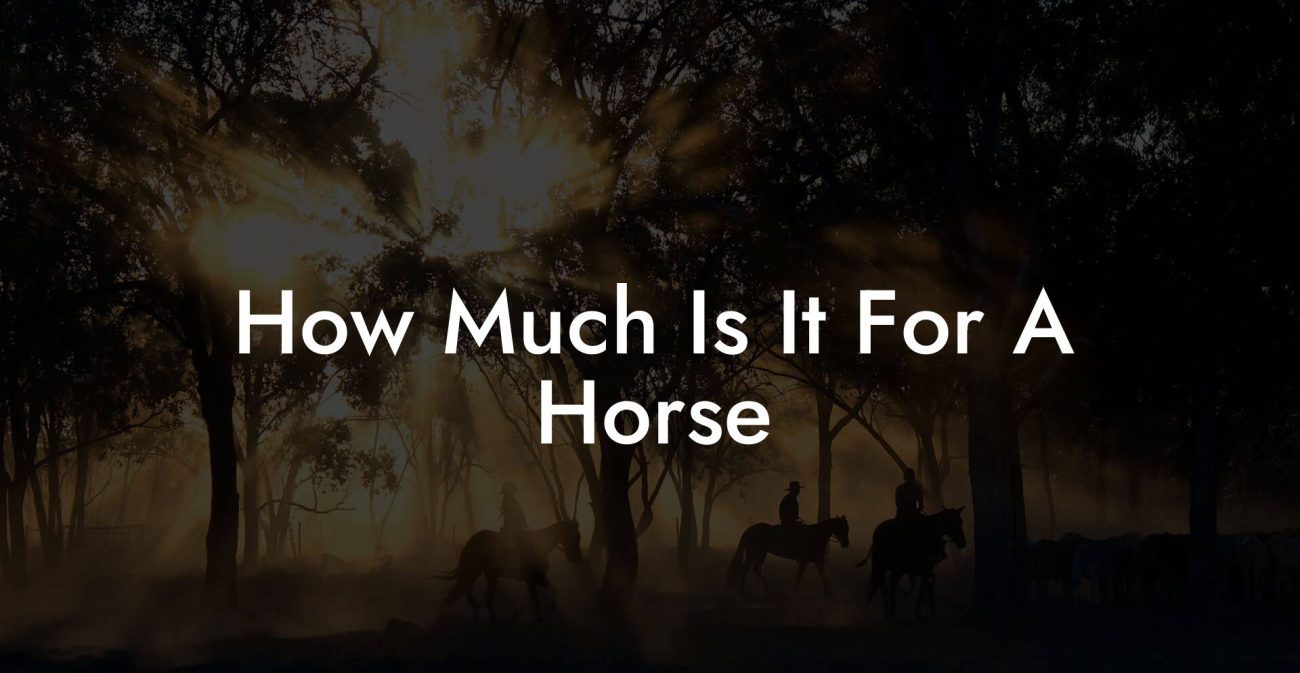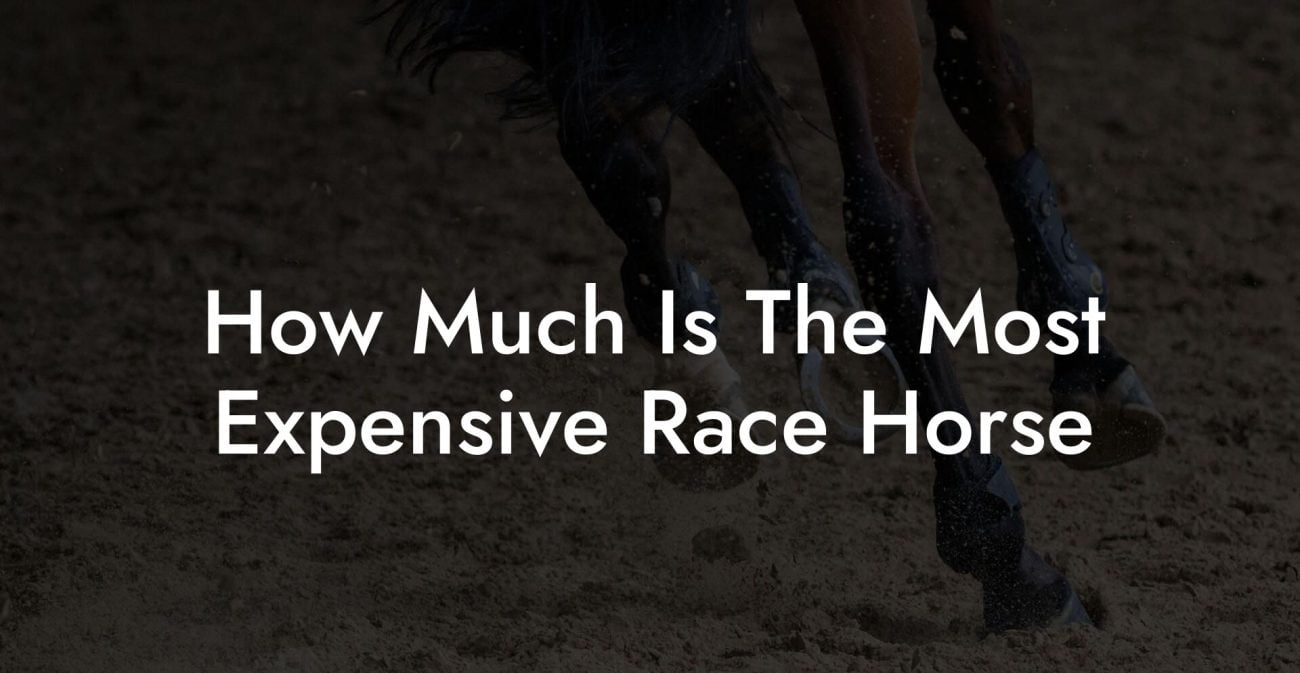Ever wondered what it takes to be the ultimate barn sitter? Picture yourself as the guardian of a rustic haven where horses roam in a carefully curated paradise. Barn sitters aren’t just caretakers, they’re the unsung heroes who ensure your equine friends get top-notch care while you’re away. Whether you’re jetting off to a music festival or embarking on a spontaneous adventure, a dedicated barn sitter keeps your horse’s world running smoothly. Join us as we dive into the art and science of barn sitting, a space where animal care meets modern lifestyle trends, and discover how to keep your beloved horse thriving.
Quick Links to Useful Sections
- What Exactly Is a Barn Sitter?
- The Vital Role of Barn Sitters in Equine health and Happiness
- Core Responsibilities of a Barn Sitter: The Day-to-Day Breakdown
- Feeding and nutrition
- Grooming and Hygiene
- Exercise and Socialization
- Stable Maintenance and Safety
- Finding the Perfect Barn Sitter: What to Look For
- Experience and Certifications
- Tech-Savviness
- Communication Skills
- Personality and Passion
- Best Practices for Acing horse care While You’re Away
- Establishing a Routine
- Utilizing Smart Technology
- Customized Care Plans
- Emergency Protocols and First-Aid
- Integrating Modern Equipment and Automation in Barn Sitting
- Smart Feeding Systems
- Environmental Monitoring
- Surveillance and Communication Tools
- Mobile Apps and Digital Logs
- Safety and Emergency Preparedness: Keeping Your Horse Protected
- Routine Safety Checks
- Emergency Response Plans
- First-Aid and Medical Oversight
- Tips and Tricks from the Barn Frontlines
- Keep a Visual Diary
- Embrace Seasonal Adjustments
- Build a Local Network
- Document Daily Changes
- Personalize the Experience
- Resources and Community Support: Your Next Steps
- Frequently Asked Questions about Barn Sitting
- Your Journey to Mastering the Art of Barn Sitting
What Exactly Is a Barn Sitter?
A barn sitter is much more than someone who checks in on your stable every now and then. Think of a barn sitter as your horse’s personal concierge, a trusted, attentive individual who manages everything from feeding routines and grooming sessions to exercise schedules and stable maintenance. In today’s busy world, where spontaneity and flexibility often rule, barn sitters offer a lifeline to horse owners looking for reliable, consistent care while they’re away.
The role can vary significantly depending on the individual needs of both the horse and the owner. For some, it means daily visits that include everything from mucking out stalls to administering basic first-aid. For others, barn sitting encompasses a holistic approach to equine care that involves nurturing mental and physical wellbeing with regular exercise routines, diverse diets, and even a bit of social interaction with the local equine community.
What sets a great barn sitter apart is not just their knowledge of horse behavior, but their ability to connect with these majestic creatures on a personal level, mixing traditional care with a modern, almost “life-hack” approach that resonates with the Gen-Z and millennial mindset.
The Vital Role of Barn Sitters in Equine health and Happiness
Reliable barn sitters are a fundamental part of ensuring that your horse remains happy, healthy, and safe when you can’t be around. These professionals or well-trained enthusiasts absorb the intricacies of your horse’s daily routine to maintain equilibrium in a setting that’s as much about emotional bonding as it is about physical care.
Here’s what makes a barn sitter indispensable:
- Consistent Care: Regular feeding, grooming, and exercise provide comfort and stability, key elements for a horse’s emotional regulation and physical health.
- Health Monitoring: A barn sitter is the first line of defense for spotting early signs of illness, injury, or behavioral shifts that might need professional intervention.
- Emergency Preparedness: In times of need, a trained barn sitter can manage emergencies, administer basic first aid, and know when to call for expert help.
- Mental Stimulation: Beyond the basics, an engaging barn sitter provides enrichment activities that stimulate your horse mentally, ensuring that boredom doesn’t lead to destructive behavior.
In many ways, the barn sitter's role transcends the act of “sitting around”, it’s about creating an environment where horses feel secure, loved, and understood, even in your absence.
Core Responsibilities of a Barn Sitter: The Day-to-Day Breakdown
Jumping into the daily life of a barn sitter, you’d find that every day unfolds differently, yet certain core responsibilities remain constant to ensure holistic equine care.
Feeding and nutrition
Nutrition is the backbone of equine health, and barn sitters must master the art of feeding schedules. This task includes understanding your horse’s dietary needs, which can vary from forage and grain ratios to specific supplements, and ensuring that each meal is served at the right time. Barn sitters are often well-versed in recognizing the subtle cues that signal a change in appetite or nutritional needs.
A good barn sitter keeps detailed records, ensuring that any changes in diet, or medication times if needed, are meticulously followed. And in today’s smart world, mobile apps and digital logs make tracking these details easier and more interactive.
Grooming and Hygiene
Grooming is not just about aesthetics; it’s a crucial part of your horse’s health regimen. Regular grooming releases endorphins, helps maintain coat condition, and provides an opportunity to check for skin issues or injuries. Barn sitters are skilled in brushing, bathing, and mane care, all while understanding the delicate balance between care and overhandling.
With the latest tools at their disposal, including ergonomic grooming equipment and digital tutorials, modern barn sitters blend traditional techniques with contemporary convenience to keep your equine looking and feeling great.
Exercise and Socialization
Horses need regular physical activity to maintain muscle tone and overall health. Whether it’s a leisurely turnout in a pasture, careful hand-walking, or structured training exercises, the barn sitter plays a key role in ensuring they get the right amount of exercise. The trend-setting barn sitters know how to mix it up, integrating fun and engaging techniques that appeal to the active nature of horses.
It’s also important to note that horses are social animals. A good barn sitter understands the dynamics of herd behavior and tailors interactions to encourage positive socialization among the equine residents.
Stable Maintenance and Safety
Maintenance of the stable environment is critical. Barn sitters are tasked with cleaning stalls, ensuring that fodder and hay are stored properly, and checking that equipment from water troughs to fans are working as they should. A well-maintained barn not only prevents accidents and illnesses but also boosts the overall morale of the animals.
Safety inspections are a daily routine, ensuring that doors latch properly, that electrical equipment is secure, and that the barn is free of hazards. For the digitally inclined, many barn sitters even utilize checklists and smart home devices to keep everything running safely and efficiently.
Finding the Perfect Barn Sitter: What to Look For
When it comes to appointing a barn sitter, you’re essentially entrusting a stranger, or a newly acquainted friend, with the care of your treasured equine companion. So, how do you ensure you’re making the right choice?
Experience and Certifications
While passion is important, experience in equine care is non-negotiable. Look for barn sitters who have verifiable references and, if possible, certifications in equine management, first aid, and even animal behavior. These credentials are often a sign that the sitter has encountered various scenarios and is equipped with the skills to handle emergencies.
Tech-Savviness
In a world where technology intersects with everything, from smart farms to digital logs, tech-savvy barn sitters bring a modern twist to traditional animal care. They use apps to monitor feeding schedules, track health data, and even update owners in real time with photos and videos.
This blend of traditional skills and modern technology means you get the best of both worlds: reliability with the added bonus of being in the loop no matter where you are.
Communication Skills
Clear, consistent communication is vital. A top-notch barn sitter not only communicates well with horses but also effectively relays updates to you. Whether it’s an unexpected change in behavior or just sharing a cute moment from the barn, keeping you informed fosters trust and ensures your horse’s needs are met.
Personality and Passion
Your barn sitter should have a genuine love for horses. Passion translates into patience, creativity, and an intuitive understanding of an animal’s mood and needs. In a modern, millennial-friendly approach, this means being approachable, relatable, and even a bit quirky, turning daily routines into fun and enriching experiences for both the sitter and the horse.
Best Practices for Acing horse care While You’re Away
The success of any barn sitting arrangement rests on adhering to a set of best practices designed to maintain and even elevate the quality of care your horse receives. Here are the key areas to focus on:
Establishing a Routine
Horses thrive on routine, which provides them with a sense of security and balance. Clear, structured routines for feeding, exercise, and playtime reduce stress and ensure that no aspect of care is overlooked. Collaborate with your barn sitter to develop a schedule that mirrors your own practices as closely as possible.
This includes setting fixed times for feeding, grooming, and even leisure activities, so your horse knows what to expect every day.
Utilizing Smart Technology
Modern barn sitters aren't afraid to embrace the digital age. From automated feeding systems that dispense the perfect portion of hay and grains, to surveillance cameras that allow you to check in via smartphone, technology can elevate the level of care your horse receives. Devices that monitor temperature, humidity, and barn security ensure that the environment remains ideal.
Moreover, using mobile apps to track daily activities not only keeps you informed but also provides useful reports that can aid in long-term health monitoring.
Customized Care Plans
Not all horses are the same, and neither are their care needs. A personalized care plan developed in consultation with your barn sitter can be a game changer. These plans take into account everything from breed-specific nutritional demands to individual personality quirks, ensuring that your horse not only remains healthy but also remains happy and engaged.
This approach blends traditional horse care wisdom with modern insights, creating a tailored experience that stands out from cookie-cutter solutions.
Emergency Protocols and First-Aid
Even with the best laid-out routines, emergencies can happen. A professional barn sitter is always prepared for unexpected situations, with a well-thought-out emergency protocol and a stocked first-aid kit. Make sure your sitter is familiar with equine first aid procedures and has access to reliable emergency contacts.
Regular drills and check-ins can also ensure that everyone knows their role should an unexpected situation arise.
Integrating Modern Equipment and Automation in Barn Sitting
Welcome to the age of the smart barn, where technology and automation are reshaping how we manage equine care. For a generation that grew up with gadgets in every pocket, incorporating modern tools in barn sitting feels like the perfect fusion of tradition and innovation.
Smart Feeding Systems
Automated feeders are now a reality, designed to ensure that your horse gets the right amount of nutrition at the right time. Some systems even come equipped with sensors that adapt portion sizes based on a horse’s activity level or weather conditions.
These systems reduce the workload on barn sitters and minimize errors, providing consistent and reliable feeding routines that keep your equine friend in top shape.
Environmental Monitoring
Temperature, humidity, and air quality can have a significant impact on a horse’s well-being. Today’s barns often integrate smart sensors that monitor these variables, sending real-time alerts to your barn sitter’s smartphone if conditions dip outside optimal ranges.
This technology helps in preventing issues like respiratory problems and heat stress, ensuring that your horse always enjoys a comfortable and safe environment.
Surveillance and Communication Tools
In an era where live updates are the norm, many barn sitters utilize surveillance cameras and two-way communication systems to keep you connected to your barn. Whether it’s a quick snapshot of your horse grazing or a video update during a particularly active day, these tools offer peace of mind.
Plus, they allow for a seamless exchange of information between you, the sitter, and veterinary professionals if the need arises.
Mobile Apps and Digital Logs
Gone are the days of handwritten notes on paper. Digital solutions now allow barn sitters to log every detail of your horse’s daily routine, from meals to exercise sessions, with precision and ease. These logs can be shared instantly with you, providing a transparent window into your horse’s daily life.
By integrating modern technology into traditional care practices, barn sitters can offer a level of detail and consistency that modern horse owners really appreciate.
Safety and Emergency Preparedness: Keeping Your Horse Protected
Safety is paramount when it comes to barn sitting. Horses are powerful animals and occasionally unpredictable, making it essential to have robust safety procedures in place. A dedicated barn sitter is trained to manage even the most sudden emergencies with calm and efficiency.
Routine Safety Checks
Daily inspections are a must. This includes checking all barn doors and gates, ensuring that equipment like feeders and water dispensers function correctly, and scanning for any potential hazards, be it loose wires or spills on the barn floor. Routine safety checks are an integral part of the job, and they help avert minor issues before they turn into major problems.
Emergency Response Plans
Every well-organized barn sitting arrangement includes a comprehensive emergency plan. Whether it’s a sudden injury, a fire, or an unexpected severe weather event, your barn sitter should have clear protocols to follow, including first-aid procedures and emergency contact numbers. This preparedness extends not just to the horse but to the entire stable and property.
Knowing that a solid plan is in place can be reassuring, allowing you to relax and enjoy your time away while your barn sitter keeps a watchful eye.
First-Aid and Medical Oversight
Basic equine first-aid training is a core requirement for any barn sitter. Whether it’s handling minor wounds, addressing colic symptoms, or administering necessary medications, a barn sitter must be prepared. Many professionals even keep a well-stocked first-aid kit on hand, complete with bandages, antiseptics, and other essentials.
Partnering with local veterinarians and having a clear line of communication further enhances the safety net around your horse.
Tips and Tricks from the Barn Frontlines
With years of hands-on experience in the barn, seasoned sitters have picked up plenty of insider tips. Whether you’re a budding barn sitter or a horse owner looking for that extra edge in care, these nuggets of wisdom will help bridge the gap between traditional equine care and modern efficiency.
Keep a Visual Diary
Snap regular photos and short video clips of your horse’s activities. These snapshots not only provide reassurance to owners but also help document behavioral patterns that might indicate health changes. A visual diary can be an invaluable resource for both current care and long-term health monitoring.
Embrace Seasonal Adjustments
Horses, like humans, respond to seasonal changes. Adjust feeding routines and exercise regimens based on the weather. For instance, in the cold winter months, ensuring your horse has extra hay and a warm shelter can make a significant difference, while summer calls for more hydration and perhaps modified workout routines to avoid heat stress.
Build a Local Network
A robust network of fellow barn sitters, local trainers, and veterinarians is a cornerstone of exceptional equine care. Tap into this community to exchange ideas, troubleshoot problems, and stay updated on the latest in equine health and barn maintenance technology. Social media groups and local meetups can prove extremely valuable.
Document Daily Changes
A small logbook or a digital diary detailing any small changes in behavior, appetite, or energy levels can help catch potential health issues early. Over time, these notes build into a comprehensive record that can aid veterinarians in identifying trends and diagnosing issues early.
Personalize the Experience
Every horse is unique, and so should be the care they receive. Learn to read your horse’s body language and customize routines to suit their personality. Whether it’s adjusting the pace during exercise or trying out new grooming techniques, a personalized touch can go a long way in building trust and rapport.
Resources and Community Support: Your Next Steps
Venturing into barn sitting, whether as a new barn sitter or a horse owner looking for top-tier care, opens a gateway to a vibrant community of passionate equine enthusiasts. From online forums and training workshops to local equestrian clubs, countless resources are available to help elevate your barn sitting and horse care expertise.
For those seeking a blend of tradition and innovation, industry blogs, YouTube channels, and social media accounts dedicated to barns, stables, and horse care are fantastic ways to stay in the loop. Don’t be shy about reaching out to experts; many seasoned barn sitters are eager to mentor newcomers and share their tried-and-true practices.
Additionally, equine health conferences and workshops offer a treasure trove of information on modern technologies in barn management, equine nutrition updates, and advanced training techniques. These resources not only broaden your knowledge but also connect you to a network of likeminded individuals who share the same passion for horse welfare.
Whether you’re aiming to become a professional barn sitter or simply seeking the best care routine for your horse while you’re away, tapping into this wealth of resources will empower you to make informed decisions and foster a community where every horse, and every caretaker, thrives.
Frequently Asked Questions about Barn Sitting
Here are some common questions to help you get a better grasp of barn sitting and how it can benefit your horse's well-being:
1. What exactly does a barn sitter do?
A barn sitter manages all aspects of equine care when the owner is away, including feeding, grooming, exercising, and maintaining the stable environment. They also monitor your horse’s health and are prepared for emergencies.
2. How do I select the right barn sitter for my horse?
Look for someone with verifiable experience in equine care, proper certifications, strong communication skills, and a genuine passion for horses. Technology savvy sitters who use digital tools to update you regularly are an added bonus.
3. Are barn sitters available on short notice?
Many professional barn sitters offer flexible scheduling options. It’s best to discuss your needs in advance to ensure that your horse receives consistent care, even when your plans change suddenly.
4. Can barn sitters handle emergencies?
Yes, a well-trained barn sitter is equipped with basic equine first-aid knowledge and follows established emergency protocols. They can manage minor issues and communicate effectively with local veterinarians for more serious matters.
5. How can technology enhance barn sitting?
Modern barn sitters use smart feeding systems, digital logs, automated surveillance, and mobile apps to maintain detailed records and provide real-time updates. This blend of technology with classic care routines ensures that your horse’s needs are met consistently.
6. What should be included in a barn sitter’s emergency kit?
A comprehensive kit typically includes bandages, antiseptics, cold packs, basic first-aid supplies, and a list of emergency contacts including local vets. Ensure that your sitter is familiar with its contents and usage.
7. Is barn sitting only for experienced caretakers?
While experience is crucial, many entry-level barn sitters gain expertise through hands-on training and mentorship from seasoned professionals. Certification courses and workshops are available for those new to the field.
8. How do barn sitters customize care for each horse?
By maintaining detailed daily logs, monitoring behavior and appetite, and tailoring routines to meet individual needs, barn sitters ensure that every horse gets personalized care that reflects its personality and health requirements.
From managing nutrition schedules to incorporating fun, engaging activities, barn sitters create an environment that is as dynamic as it is supportive.
Your Journey to Mastering the Art of Barn Sitting
Embarking on the barn sitting journey is an invitation to become a key player in your horse’s life, even from afar. By blending traditional equine care with modern techniques and digital tools, barn sitters are redefining what it means to care for a horse in today’s fast-paced world. It’s a role that demands a love for animals, a knack for organization, and the willingness to dig into both the nitty-gritty and the innovative aspects of horse care.
Whether you’re a dedicated horse owner seeking peace of mind while traveling, or an aspiring barn sitter eager to make your mark in the realm of equine care, remember: success comes from a deep commitment to both the daily rituals and the cutting-edge methods that ensure your horse is cared for with unwavering attention.
Embrace the challenges, relish the triumphs, and transform the simple act of barn sitting into an art form that celebrates both tradition and innovation. Your journey into mastering the art of barn sitting is a vibrant blend of passion, technology, and heartfelt dedication, a journey where every hoof beat counts.
So, whether you’re planning your next getaway or stepping into a new career path, know that the world of barn sitting is ready to welcome you with open arms and plenty of hay bales. Trust in the process, nurture your skills, and discover the joy of seeing your horse flourish through the care you provide, even from afar.
The future of equine care is here, dynamic, engaging, and open-ended. Let this guide be your stepping stone to creating a legacy of trust, innovation, and heartfelt care for every horse that comes under your wing.

